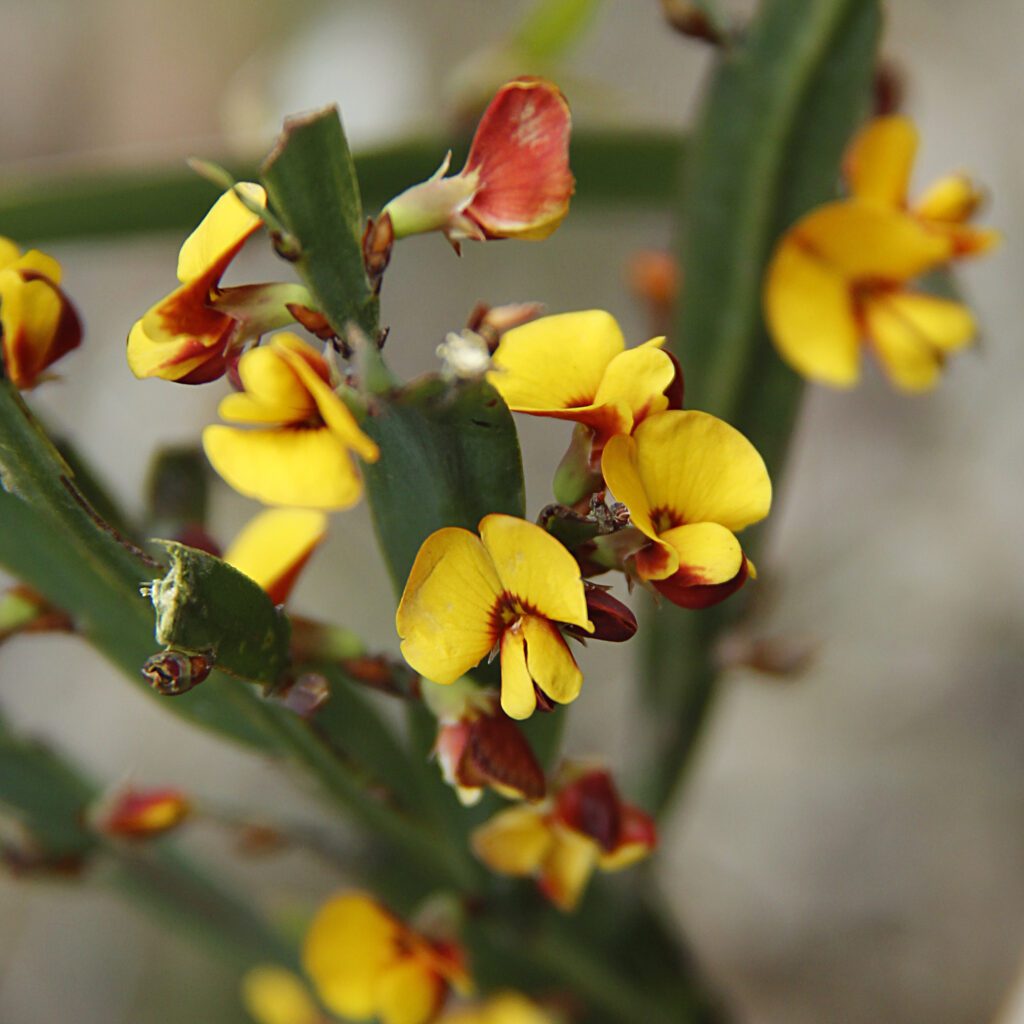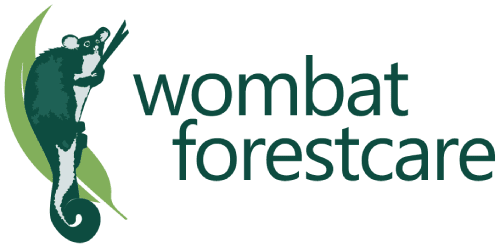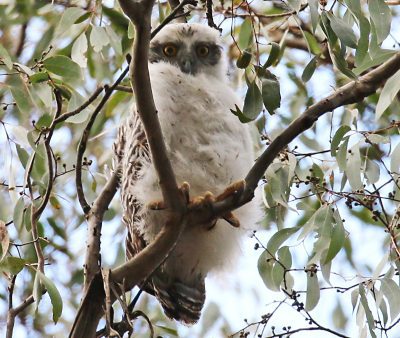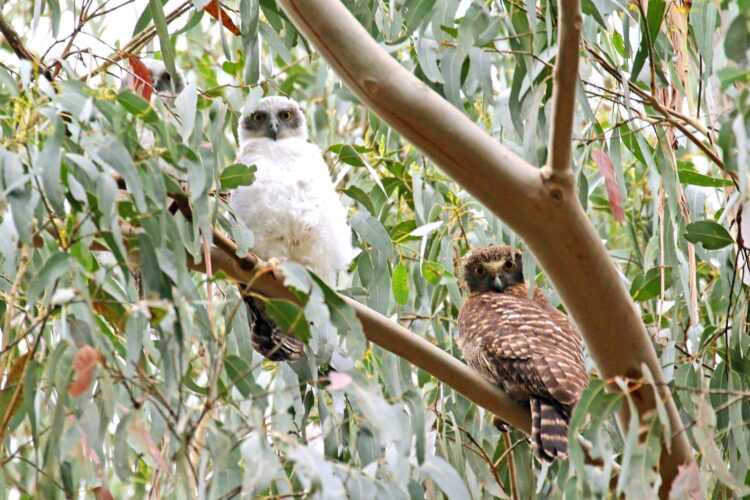ABOUT + JOIN
Wombat Forestcare is a community group dedicated to protecting and enhancing the natural ecosystems of the Wombat Forest and surrounding areas.
Wombat Forestcare engages in a range of activities. These have a strong focus on community involvement and education, and include undertaking flora and fauna surveys. We also enjoy the social aspect of a forest group, with picnics and bushwalks for people who love being in the bush.

Wombat Leafless Bossaiea, Bossaisea vombata – Photography © Gayle Osborne
What is biodiversity and why is it so important?
Biodiversity is short for biological diversity, and includes all plants, animals, micro-organisms and the ecosystems that support them.
All life, including humans, depends on healthy and functioning ecosystems to provide:
- a stable climate that ecosystems, and in particular plants, help to maintain clean air, clean water and healthy soils
- protection from devastating and costly land degradation, such as salinity
- natural pest control and pollination for agricultural crops
- food, medicines, timber and recreation
What are the main threats to biodiversity in this area?
- climate change
- clearing and habitat fragmentation
- over grazing by pest or introduced animals
- weeds
- inappropriate fire regimes
- loss of hollow bearing trees
- loss of wetland habitats
About the Wombat Forest
The Wombat State Forest straddles the Great Dividing Range in Central Victoria between Daylesford and Woodend. It is the largest area of forest in the region, covering 56,000 hectares.
Since Europeans arrived in the district, the Wombat has had an intense history of exploitation for gold, timber, firewood and more recently, woodchips. Although logging and wood chipping have ceased, the impacts of these activities, such as the loss of hollow-bearing trees and the fragmentation of the remaining areas of mature forest will be felt for many years.
Scattered throughout the forest the stumps of once- massive trees can be found, a testimony to the original forest.
Despite the degradation caused by this exploitation, the Wombat remains a very important area for biodiversity conservation. The Wombat Forest has a diversity of vegetation types ranging from dry to damp forests and over 350 indigenous flora species. It contains critical habitat for a variety of native fauna.
This diverse range of flora and fauna includes endangered species such as the Powerful Owl and the Wombat Leafless Bossiaea. While we may be aware of the animals, birds, lizards, frogs, insects and plants, we tend to give much less thought to the silent and secretive organisms working endless miracles just below the surface. The health of the forest is dependent on its relationships with fungi and the protection of habitat is a fundamental factor in the preservation of fungal diversity. The diverse and mysterious ecosystems of the Wombat Forest are critical to its future health and the
wellbeing of its species.
The Wombat State Forest is also a vital water source for a large section of the Victorian community, being headwaters of six major rivers which flow to the north (Coliban, Loddon, and Campaspe) and to the south (Lerderderg, Werribee and Moorabool).
The Wombat Forest, recognised as a “greenhouse refugia”, is one of the areas in Victoria which is expected to fare better under the effects of climate change (R. Brereton et al, 1995). Acknowledging the Wombat as a greenhouse refuge means that on a statewide scale this area is very important ecologically and should be managed as such. The Wombat Forest is first and foremost a refuge for its inhabitants and migratory species . . . and a source of inspiration for humans who value its richness, its subtle beauties and its tranquillity.
It is our duty to be custodians of this special place so that others who come after us can also enjoy these vital but fragile qualities.
Powerful Owls, Ninox Strenua – Photography © Gayle Osborne
What can you do to protect and enhance biodiversity on your property?
Contribute to protecting biodiversity in our local landscape in a variety of ways:
- Avoid or minimise the clearing of native vegetation
- Fence remnant vegetation to protect plants from grazing by livestock
- Expand or improve the quality of existing remnant vegetation through planting
- indigenous plants
- Control feral pest such as cats, rabbits and foxes
- Ensure that domestic pets, such as cats and dogs, do not kill or injure wildlife
- Control weeds that invade bushland, such as blackberry, broom and gorse
- Leave fallen logs, large dead standing trees and rocky areas as they provide habitat for native animals
Landowners have legal responsibilities regarding the management of native vegetation and fauna on their properties.
Under the Planning and Environment Act 1987 and Victorian Planning Provisions 1996, a planning permit is required to destroy, remove or lop native vegetation on private land (some exemptions apply).
All native animal species are protected.
Wombat Forestcare Inc Membership Application
Wombat Forestcare Inc is dedicated to preserving the biodiversity and amenity of the Wombat State Forest by utilising the skills and resources of the community. It will monitor activities affecting the forest and will work with government departments and their officers to improve or correct procedures which may impact on it. By becoming a member you will have input to our activities and give it needed support.
Membership fee: $15 Single, $20 Family per year
Please complete this form and email to: info@wombatforestcare.org.au and
we will provide electronic banking details for payment.
Or return this form with enclosed payment to:
Wombat Forestcare Inc 715 Little Hampton Road, Glenlyon Victoria 3461
Top Photo © Sandy Scheltema


